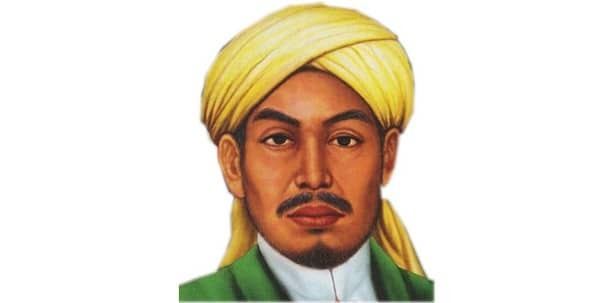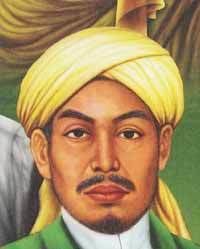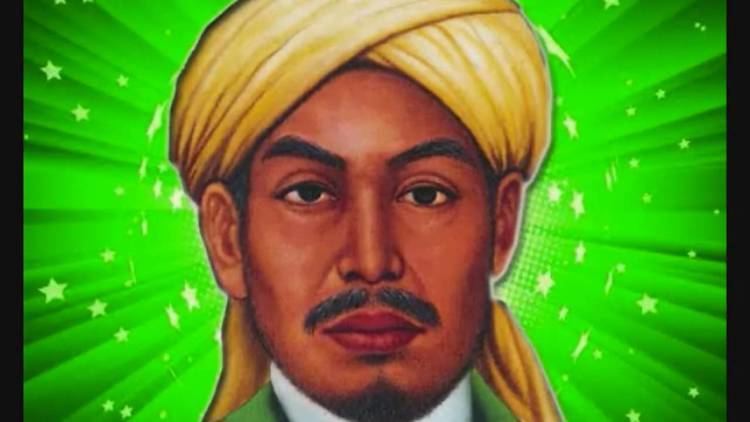Reign (1479-1568) Successor Panembahan Ratu Nationality Egyptian Spouse Nyai Ratu Dewi Pakungwati | Predecessor Prince Cakrabuana Dynasty Hashemite Full name Syarif Hidayatullah | |
Issue SabakingkingPasareanRatu AyuWinahonTrusmiBratakelanaJayalelana Died 19 September 1568, Keraton Kasepuhan, Cirebon, Indonesia Children Hasanudin, Ratu Wulung Ayu Similar Sunan Kalijaga, Sunan Bonang, Sunan Ampel, Sunan Giri, Sri Baduga Maharaja | ||
Sunan Gunungjati (1448–1568) was one of the Wali Songo, or nine saints of Islam revered in Indonesia. He founded the Sultanate of Banten, as well as the Sultanate of Cirebon on the north coast of Java. He was born Syarif Hidayatullah (Arabic: شريف هداية الله Sharīf Hidāyah Allāh in 1448 CE: the child of a dynastic union between Syarif Abdullah Maulana Huda, an Egyptian of Hashemite descent, and Nyai Rara Santang, daughter of the Prabu Siliwangi, King of Sunda ( Pajajaran ). As such, Syarif Hidayatullah could claim descent, on his paternal side, from the Islamic prophet Muhammad, through his daughter, Fatima; and on his mother's side, a Hindu Devaraja of Sunda.
Contents

There is much historical uncertainty as to his early life and later career in the Indonesian Archipelago. Some say that he was born in Pasai, one of the earliest centres of Islam in Southeast Asia; whilst others say that he was born in Pajajaran, capital of his maternal grandfather's Kingdom of Sunda. He is reported to have married a sister of Trenggono, Sultan of Demak, and to have led military expeditions for Demark against Sunda. As Fatahillah - so the story goes - he defeated the Portuguese at their base in Sunda Kelapa, and renamed it Jayakarta in 1527. To this day, his victory over the Portuguese is commemorated as the official anniversary of the founding of Jakarta. The many conflicting stories about Sunan Gunungjati led some scholars to conclude that he might be a conflation of more than one historical figure.

Education

Syarif Hidayatullah studied Islam under the guidance of venerated scholars in Egypt, some of whom probably included leading Sufis, during his fourteen years of peregrinations overseas. It is assumed that he must have also undertaken his pilgrimage to Mecca and Medina.
Leadership

Sunan Gunungjati was the only one of the Wali Songo to have assumed a sultan's coronet. He used his kingship - imbued with the twin authority of his paternal Hashemite lineage and his maternal royal ancestry - to propagate Islam all along the Pesisir, or northern coast of Java.
Dawah

In his dawah he upheld the strict methodology propagated by the sheikhs in the middle east but he still remained close to the local people by developing basic infrastructure and building roads connecting the isolated areas of the province. He and his prince Maulana Hasanuddin took part in several expeditions, particularly in Banten. The leader in Banten voluntarily submitted the leadership of the region to Sunan Gunungjati but was eventually appointed as the new leader of the province which later became the kingdom of Banten.
Around the age of 89, Susan Gunungjati started to focus on dawah and began moves to appoint a successor. Pangeran (Prince) Pasarean later became the new king.
Death
In 1568 Sunan Gunungjati died at the age of 120 in Cirebon. He was buried in Gunung Sembung, Gunung Jati, around 5 km to the north of the town centre of Cirebon. His tomb has become one of Java's most important pilgrimage points. The tomb enclosure is embedded with porcelain plates, which are replaced with new pieces bought by well wishers. Today the pieces are largely of European or Japanese origin.
